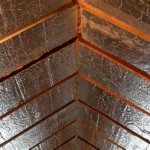Cathedral Ceiling Living Room Decor Ideas: 2024 Trends
Cathedral ceilings, characterized by their soaring heights and sloping angles, offer a dramatic architectural feature that can significantly enhance the aesthetics of a living room. However, decorating a space with such a ceiling presents unique challenges and opportunities. In 2024, design trends are focusing on maximizing the impact of these ceilings while maintaining a sense of warmth and functionality. Understanding these trends can help homeowners create a living room that is both visually stunning and comfortable.
One primary consideration is the scale of furniture and décor. In rooms with cathedral ceilings, standard-sized furniture can appear disproportionately small. Therefore, selecting pieces that are appropriately scaled to the room's volume is crucial. Similarly, wall décor and lighting fixtures must be chosen to fill the vertical space without overwhelming the overall design. This article explores various decor ideas and trends for 2024, focusing on how to effectively utilize the unique characteristics of cathedral ceilings to create a cohesive and stylish living room.
Emphasizing Height with Vertical Elements
One of the key trends in 2024 for decorating living rooms with cathedral ceilings is the strategic use of vertical elements to accentuate the height and draw the eye upward. This can be achieved through various means, including tall bookshelves, striking artwork, and strategically placed lighting fixtures. The goal is to avoid leaving the upper reaches of the walls feeling empty and disconnected from the rest of the room.
Tall bookshelves, reaching nearly to the ceiling, can serve as both a functional storage solution and a visual statement. These can be customized to fit the specific angles and dimensions of the wall, creating a built-in look. Consider incorporating a mix of books, decorative objects, and plants to add visual interest and break up the solid expanse of shelves. The choice of materials for the bookshelves should complement the overall design aesthetic of the room, whether it be a modern, minimalist style or a more traditional, rustic look. Darker woods can add warmth and depth, while lighter woods or painted finishes can create a brighter and more airy feel.
Artwork is another essential element in emphasizing vertical space. Large-scale paintings or sculptural pieces can command attention and draw the eye upward. Consider creating a gallery wall that extends towards the ceiling, using a variety of frame sizes and styles to add visual texture. Abstract art, with its open compositions and dynamic lines, can be particularly effective in filling large vertical spaces. Alternatively, a single, impactful piece of art can serve as a focal point, anchoring the room's design. The placement of the artwork is crucial; it should be positioned to maximize its visual impact and complement the architectural features of the room.
Lighting plays a vital role in highlighting the vertical space and creating a sense of drama. Pendant lights with long cords or chains can be suspended from the ceiling, drawing the eye upward and providing ambient lighting. Consider choosing fixtures with interesting shapes or finishes to add visual interest. Alternatively, wall sconces can be strategically placed to illuminate the upper portions of the walls, creating a soft, indirect light that enhances the feeling of spaciousness. Track lighting can also be used to highlight artwork or architectural details, adding depth and dimension to the room. Layering lighting is key to creating a balanced and inviting atmosphere.
Balancing Scale and Proportion with Furniture
Selecting furniture that is appropriately scaled to the room's dimensions is crucial for creating a harmonious and balanced living room with a cathedral ceiling. Standard-sized furniture can easily get lost in the vastness of the space, making the room feel empty and uninviting. Therefore, choosing larger pieces that can hold their own against the soaring ceiling is essential. This does not necessarily mean filling the room with bulky furniture; rather, it involves selecting pieces that have a substantial presence and visual weight.
Consider opting for a larger sofa or sectional that can anchor the seating area. A deep-seated sofa with generous cushions can provide a comfortable and inviting space for relaxation. Choose a fabric that is both durable and visually appealing, such as a textured linen or a luxurious velvet. Add throw pillows in varying sizes and textures to create a layered and inviting look. The color of the sofa should complement the overall color palette of the room, whether it be a neutral tone that blends seamlessly with the surroundings or a bold hue that adds a pop of color.
Coffee tables and side tables should also be chosen with scale in mind. A large, rectangular coffee table can provide ample surface space for drinks, books, and decorative objects. Consider choosing a table with a unique design or finish to add visual interest. Side tables should be tall enough to be easily accessible from the sofa or chairs, and they should be proportionate to the size of the seating. A mix of materials, such as wood, metal, and glass, can add visual texture and depth to the room.
Rugs play a crucial role in defining the seating area and anchoring the furniture. A large area rug can visually connect the various pieces of furniture and create a sense of cohesion. Choose a rug with a pattern or texture that complements the overall design aesthetic of the room. The size of the rug should be large enough to accommodate all of the furniture in the seating area, with at least a few inches of rug extending beyond the edges of the furniture. This will help to create a more grounded and inviting space.
Creating Warmth and Intimacy through Color and Texture
While cathedral ceilings can create a sense of grandeur and spaciousness, they can also make a room feel cold and impersonal if not properly decorated. One of the key challenges is to create a sense of warmth and intimacy in such a vast space. This can be achieved through the strategic use of color, texture, and lighting. In 2024, the trend is to embrace warm, inviting colors and tactile textures that create a cozy and comfortable atmosphere.
Color plays a significant role in setting the mood of a room. Warm, earthy tones, such as beige, tan, brown, and terracotta, can create a sense of warmth and grounding. These colors can be used on the walls, furniture, and accessories to create a cohesive and inviting space. Consider using a darker shade on the ceiling to visually lower the height and create a more intimate atmosphere. Accent colors, such as deep blues, greens, and reds, can add pops of color and visual interest. However, it is important to use these colors sparingly to avoid overwhelming the space.
Texture is another essential element in creating warmth and intimacy. Incorporate a variety of textures throughout the room to add visual depth and tactile interest. This can be achieved through the use of natural materials, such as wood, stone, and wool. Consider adding a textured rug, such as a shag rug or a woven rug, to add warmth and softness to the floor. Throw pillows in various textures, such as velvet, linen, and faux fur, can add comfort and visual interest to the seating area. Wall tapestries or textured wallpaper can also be used to add warmth and dimension to the walls.
Lighting is crucial for creating a warm and inviting atmosphere. Avoid harsh, overhead lighting, which can make the room feel cold and sterile. Instead, opt for a layered lighting scheme that includes ambient lighting, task lighting, and accent lighting. Use dimmer switches to control the intensity of the lighting and create a more intimate atmosphere. Consider adding floor lamps and table lamps to provide soft, ambient lighting. Candles and fireplaces can also add warmth and visual interest to the room. The type of light bulbs used can also affect the overall mood of the room. Warm white light bulbs can create a more inviting and comfortable atmosphere, while cool white light bulbs can create a brighter and more energizing atmosphere.
In conclusion, decorating a living room with a cathedral ceiling requires careful consideration of scale, proportion, color, and texture. By embracing the 2024 trends and focusing on maximizing the impact of the vertical space, balancing the furniture scale, and creating warmth and intimacy, homeowners can create a living room that is both visually stunning and comfortable. The key is to create a cohesive and harmonious design that reflects the homeowner's personal style and preferences. The architectural feature can be a design focal point if proper design elements are considered.
:max_bytes(150000):strip_icc()/houzz-home-trends-2024-warm-neutrals-1123-70c725055fba44eb800ba3dbf302fe6e.jpeg?strip=all)
2024 Home Design Trends According To Houzz

The Future Of Home Interior Design Trends For 2024 Haus Blaylock

10 Ways To Make A High Ceilinged Room Look Cozier Kylie M Interiors

How To Decorate A High Ceiling Living Room Bedroom And More

Embracing The Future Interior Design Trends For 2024

40 Outstanding Ideas For High Ceiling Living Rooms That Add An Air Of Luxury

10 Interior Lighting Trends For 2024

Designer Approved Tips To Make The Most Of High Ceilings

20 Best Home Interior Design Ideas For 2024 Decorpot

What Is A Vaulted Ceiling Pros And Cons Of Ceilings
Related Posts








